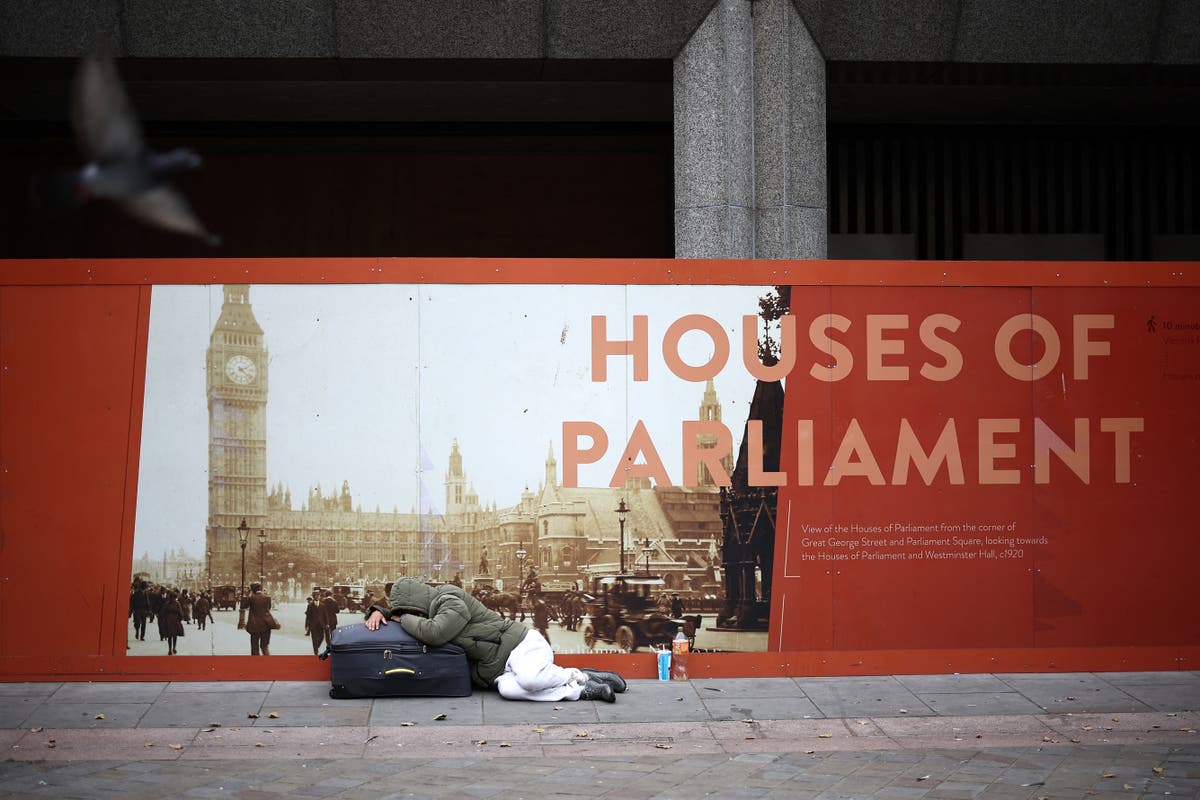Nearly 100 councils had more requests for emergency housing help by homeless refugees in the first nine months of 2024 than in the whole of 2023, new figures reveal.
The number of migrants who need housing from councils after being evicted from Home Office accommodation has spiked in the past year – with new data showing that levels of need in 2024 will likely surpass 2023.
Figures obtained by refugee charity Care4Calais, and shared with The Independent, show that councils have been increasingly swamped for help throughout 2024.
Local authorities cannot always finding housing for homeless refugees, especially if they are not deemed to be in priority need – such as having a physical illness or having children. Council housing services have struggled to cope, leaving many asylum seekers to sleep on the streets.
In total, 19,472 migrants came to local authorities seeking housing help after being evicted from Home Office accommodation in 2023, freedom of information data from 278 councils showed.
And for the first nine months of 2024, the number of homeless migrants needing help had already reached 18,002, statistics from the same councils revealed.
Of the 278 councils that responded to requests for data, 99 had seen more refugees needing help in the first nine months of 2024, compared to the whole of 2023. And 65 councils had matched the 2023 total in the months leading up to October 2024.
View more
Government statistics, compiled from council reports, also show a 251 per cent increase in people who have been told to leave asylum accommodation becoming homeless. Some 13,520 households needed help in financial year 2023/24, up from 3,850 the year before.
The number of asylum seekers living in Home Office hotels has risen 20 per cent since Labour took power – with the latest statistics showing there were 35,651 people housed as of 30 September.
This is however down from the high of over 56,000 people in hotels in September 2023. The Home Office is looking at using disused care homes and student accommodation to house asylum seekers as they try to reduce the number of hotels used.
View more
There are an additional 70,530 asylum seekers living in other accommodation provided by the Home Office, such shared houses or hostels, data from 30 September 2024 shows.
The total number of people receiving asylum support from the Home Office is down from 123,758 in September 2023, to 109,024 in September this year – a drop of 12 per cent.
Faster decision-making on asylum claims by the Home Office has partly led to a surge of migrants being evicted from hotels and needing urgent homelessness help from councils. When asylum seekers are granted refugee status, they are evicted from their hotel and have to find their own accommodation, as well as get set up to start work or claim benefits.
View more
The 28-day “move-on” period for them to find somewhere to live before eviction had been criticised by charities for being too short – and was driving requests for emergency housing help from councils.
This month, the Home Office extended the grace period that an asylum seeker has to transition from supported housing to their own accommodation from 28 to 56 days.
The extension, which began on 9 December, will be in place until June 2025, when the impacts will be re-assessed.
open image in galleryNew refugees often become homeless after they are kicked out of Home Office hotel accommodation when they receive the right to asylum in the UK (Getty Images)
In the year ending September 2024, 99,790 people claimed asylum, similar to the previous year. The most common nationalities were people from Pakistan, Afghanistan and Iran.
However the number of people claiming asylum has more than doubled since the year ending September 2021. Though there has also been an increase in small boat arrivals since 2020, these make-up only 28 per cent of the total asylum claims for the year ending September 2024.
Asylum seekers and refugees made up around 11 per cent of the total number of immigrants who came to the UK last year. Compared with other European countries, the UK has the 19th largest intake of asylum seekers when measured by per head of population.
open image in galleryThere has been an increase in asylum claims in the UK since 2021, government statistics show (Home Office)
Steve Smith, CEO of Care4Calais said: “Across the country, our volunteers have been supporting people who, having received the welcome news that they have been granted refugee status, face the nightmare of being made homeless.
“We knew 2023 was a record year for homeless refugees, but these figures show a frightening acceleration in many parts of the country in 2024.
“Fixing this problem in 2025 will take systemic change. Extending the move-on period to 56 days is a good start, but new refugees need more support if we are to prevent them from becoming homeless.”
A spokesperson for the Local Government Association said: “The increasing numbers of people presenting as homeless show the pressures that councils and newly recognised refugees are facing, so it is positive that the government has temporarily extended the ‘move on’ period to ensure more time for them to get the support they need and to mitigate the risk of homelessness.”
A government spokesperson said: “This government will provide the largest-ever investment in homelessness prevention services for councils next year, with a total of nearly £1bn overall allocated to councils to help break the cycle of homelessness.
“And while we have inherited huge pressures in the asylum system, the government is also working with local authorities and organisations like Migrant Help to try and ensure that individuals leaving asylum accommodation after being granted refugee status or leave to remain receive the support and advice they need to mitigate the risks of falling into homelessness.”
